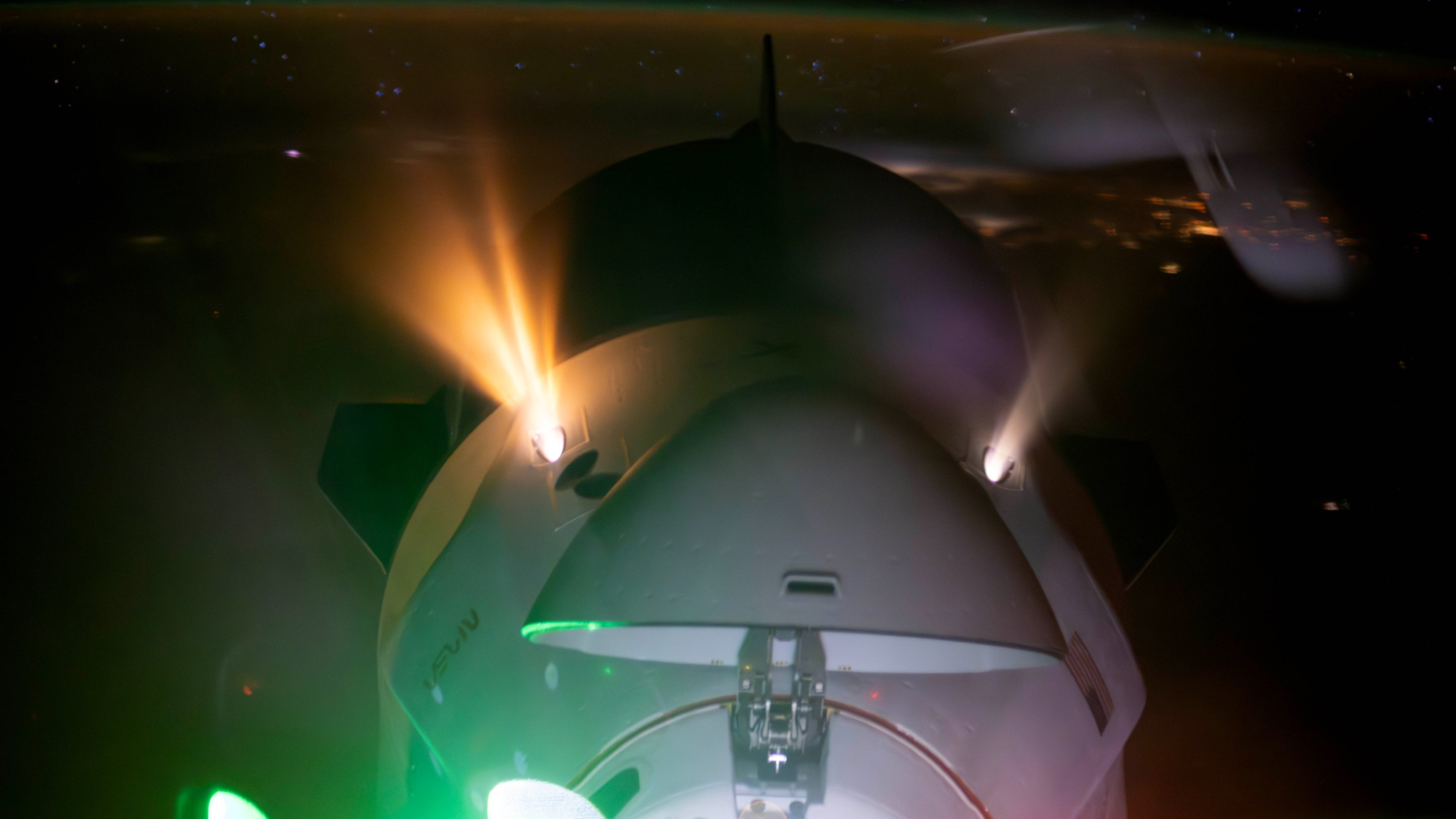
The International Space Station is going a just tiny bit faster today, after receiving an orbital boost from SpaceX's Dragon spacecraft.
SpaceX's 31st commercial resupply mission lifted off Nov. 4, launching a Dragon cargo vehicle to rendezvous with the International Space Station (ISS), docking to the station's forward-facing port the next day. Today (Nov. 8), for the first time, Dragon performed an orbit-raising maneuver to stabilize the ISS's trajectory in low-Earth orbit.
Such maneuvers are routine for the orbital lab, which requires periodic boosts to maintain its altitude above Earth and prevent its orbital decay into the planet's atmosphere. Historically, this has been accomplished using Russia's Soyuz and Progress vehicles, and other spacecraft, but, for the first time, it has now been performed SpaceX's Dragon. The milestone marks a symbolic beginning of the end for the ISS, as data from the maneuver will be used toward the design of the deorbit vehicle NASA has contracted SpaceX to construct to plunge the decommissioned space station into the Pacific Ocean sometime after 2030.
Today's reboost began with the ignition of Dragon's thrusters around 12:50 p.m. ET (1750 GMT). The burn was expected to last about 12.5 minutes to raise the station's orbit
"NASA and SpaceX monitored operations as the company’s Dragon spacecraft performed its first demonstration of reboost capabilities for the International Space Station at 12:50pm ET today," NASA posted on X.
Related: SpaceX Dragon cargo capsule arrives at ISS on 31st resupply mission (video)
.@NASA and @SpaceX monitored operations as the company’s Dragon spacecraft performed its first demonstration of reboost capabilities for the International Space Station at 12:50pm ET today. https://t.co/jckgtW5pW8November 8, 2024
Dragon isn't the first U.S.-built spacecraft to lend its fuel to the space station's orbit. NASA tested an ISS orbit reboost using a Northrop Grumman Cygnus cargo vehicle in 2022. The data from Dragon's reboost, however, will ultimately pave the way for a catastrophic "un-boosting" of the space station's orbit.
The ISS has been in continuous use and occupancy for almost 25 years now. NASA has projected the ISS's viability through the end of this decade. Citing aging technology, increasing maintenance requirements and rising costs, the space agency aims to retire the space station no earlier than 2030, and in July, awarded SpaceX the contract to develop the vehicle tasked with safely plummeting the football field-size spacecraft into the sea.
When the burden of ongoing ISS costs are alleviated from its budget, NASA will count on the availability of new commercially operated space stations to continue its research in low-Earth orbit. The space station's retirement will free up financial room for the space agency to expand endeavors like the Artemis Program and other deep space exploration missions.
Jared Metter, director of flight reliability at SpaceX, expressed optimism during a press conference Monday (Nov. 4), saying today's attitude control maneuver was "a good demonstration" of Dragon's capabilities as the company designs the ISS deorbit vehicle.
Though international tensions were inflamed following Russia's invasion of Ukraine in 2022, the U.S.-Russian partnership as it pertains to the ISS has persisted. Dragon's success, however, does eliminate another U.S. reliance on Russia for operation of the space station, should that partnership dissolve.
Between the retirement of the space shuttle in 2011 and the beginning of Dragon's crewed missions, the only way for NASA astronauts to launch to the ISS was aboard Russian spacecraft. SpaceX's Crew Dragon returned the launch of NASA astronauts to American soil in 2020, and has now proven it can maintain the space station's orbit, indefinitely.
While NASA has committed to its ISS partnership through 2030, Russia, as of yet, is only committed through 2028, stating its intent to launch a new Russian space station into polar orbit by 2027.







